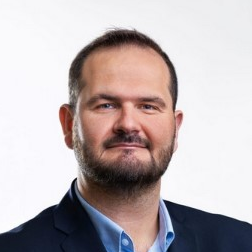New Advances in Hair Cosmetic Science
A special issue of Applied Sciences (ISSN 2076-3417). This special issue belongs to the section "Applied Biosciences and Bioengineering".
Deadline for manuscript submissions: closed (30 November 2023) | Viewed by 7296
Special Issue Editors
Interests: protein engineering; protein expression; development of protein-based cosmetics; hair as an analytical tool; in vitro culture of cells and screening of molecules bioactivity
Special Issues, Collections and Topics in MDPI journals
Interests: proteins for surfaces’ functionalization; enzymatic polymerization; enzymatic reactions; deep eutectic solvents for extraction, cosmetics and textile applications
Special Issues, Collections and Topics in MDPI journals
Special Issue Information
Dear Colleagues,
Hair is an important component of body image with unquestionable relevance in society that we can easily change according to culture, fashion, and personal taste. Hair undergoes irreversible changes as a result of cosmetic operations and products as well as environmental assaults and daily routines. This causes the hair to lose some of its properties, such as strength, elasticity, shine, and smoothness. Recent research has proven the beneficial effects of natural-based cosmetic formulations on hair, as they can protect the hair fiber or modulate some of its properties. Furthermore, these cosmetics can be applied over the hair fiber or target the hair follicle, delivering bioactive agents.
This Special Issues welcomes original works and reviews focused on the development of new classes of natural-based cosmetic formulations and how they affect hair attributes such as color, fragrance, strength, elasticity, shape, shine, and volume. We also welcome submissions on hair biology and on the modulation of the hair cycle.
The incorporation of new formulations in the creation of alternative hair products in the future will result in innovative, sustainable, and environmentally friendly cosmetic goods that have a significant impact on the cosmetic sector.
Prof. Dr. Artur Ribeiro
Dr. Carla Silva
Guest Editors
Manuscript Submission Information
Manuscripts should be submitted online at www.mdpi.com by registering and logging in to this website. Once you are registered, click here to go to the submission form. Manuscripts can be submitted until the deadline. All submissions that pass pre-check are peer-reviewed. Accepted papers will be published continuously in the journal (as soon as accepted) and will be listed together on the special issue website. Research articles, review articles as well as short communications are invited. For planned papers, a title and short abstract (about 100 words) can be sent to the Editorial Office for announcement on this website.
Submitted manuscripts should not have been published previously, nor be under consideration for publication elsewhere (except conference proceedings papers). All manuscripts are thoroughly refereed through a single-blind peer-review process. A guide for authors and other relevant information for submission of manuscripts is available on the Instructions for Authors page. Applied Sciences is an international peer-reviewed open access semimonthly journal published by MDPI.
Please visit the Instructions for Authors page before submitting a manuscript. The Article Processing Charge (APC) for publication in this open access journal is 2400 CHF (Swiss Francs). Submitted papers should be well formatted and use good English. Authors may use MDPI's English editing service prior to publication or during author revisions.
Keywords
- cosmetic formulations
- hair biology
- hair cycle
- hair fiber
- hair protection
- hair structure
- modification of hair properties
- chemical-based modification vs. natural-based modification






